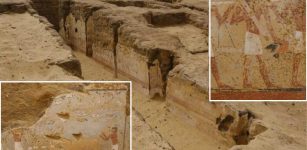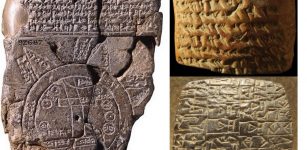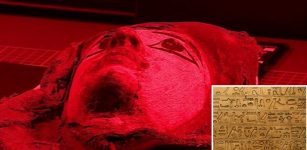Oldest Evidence Of Beer Comes From Raqefet Cave, Dating Back To 11,000 B.C.
Jan Bartek - AncientPages.com - Beer has been enjoyed by people for millennia. Evidence suggests that ancient Egyptians favored a slightly tart beer, reminiscent of the modern-day gose, a lemony beer from Germany. Additionally, Homer, the Ancient Greek poet, mentioned a beverage called κυκέων (pronounced "kee-kay-own), which was a blend of grape wine and fermented grains.
Credit: Pixabay - DesignDrawArtes - Public Domain
But how old is beer exactly? Rupp, known as the "Beer Archaeologist," holds one of the most intriguing roles in academia. He travels globally to study how ancient cultures brewed their beers and then recreates these historical recipes in his research brewery at home. Currently, he is aging two variations of Homer's Greek libation, which he notes have higher alcohol content compared to traditional beers.
"When I'm drinking a glass of wine, typically I want to sip on it with my wife," Rupp said while sipping on a Kiwi Herman New Zealand Lager at Vision Quest Brewing in Boulder, Colorado. "If I've got scotch out, I want alone time…But when it's beer, I want to drink beer with other people. Beer has been the thing that's bound us together for a long time."
To date, the most ancient evidence of beer brewing has been discovered in a cave in Israel. Inhabitants of Raqefet Cave utilized open mortars carved into the bedrock for crushing and soaking plant starches, thereby converting them into sugars—a process known to contemporary brewers as mashing. Subsequently, these sugars were fermented in containers crafted from fibers.
Notably, the Raqefet Cave site is dated to approximately 11,000 B.C. This finding suggests that beer production is nearly as old as agriculture itself.
"As science progresses, I think both of those dates are going to continue to get pushed back," Rupp said.
Ancient sites such as these also challenge contemporary perceptions of beer. As noted by Rupp, modern brews are predominantly crafted from cereal crops like barley, wheat, or rice. However, the inhabitants of Raqefet Cave produced their beverages using a mixture of wild-harvested grains and other plants such as tubers and fruit.
The more familiar modern-tasting beer emerged partly in Bavaria during the 15th century. At that time, brewers sought to evade taxes on various herbs by increasingly flavoring their beers with hops, which were not taxed. In response to this practice, William IV of Bavaria enacted the Bavarian Purity Law in 1516, which strictly defined beer as a beverage made from only three ingredients: water, barley, and hops.
Raqefet excavation. Rock mortars used to prepare malt for beer manufacture. Credit: Dani Nadel - CC BY 3.0
These regulations persisted and eventually evolved into the Reinheitsgebot or "purity order," which continues to influence the German beer industry today.
"Migrants coming into the U.S. in the 19th century like Adolph Coors, the Anheuser family and the Miller family all had a German brewing background," Rupp said in a press release. "That's why, up until the craft beer movement of the 1990s, American beer was lager."
See also: More Archaeology News
Rupp thinks that we should refrain from imposing restrictive definitions on what constitutes beer, suggesting instead that it be defined solely as a beverage that undergoes brewing followed by fermentation. This broader definition allows brewers to experiment with unconventional flavors such as peach sours, chocolate mole stouts, and even ancient wine-beer hybrids. Such an approach can be seen as perpetuating a venerable and extensive tradition.
Written by Jan Bartek - AncientPages.com Staff Writer






















